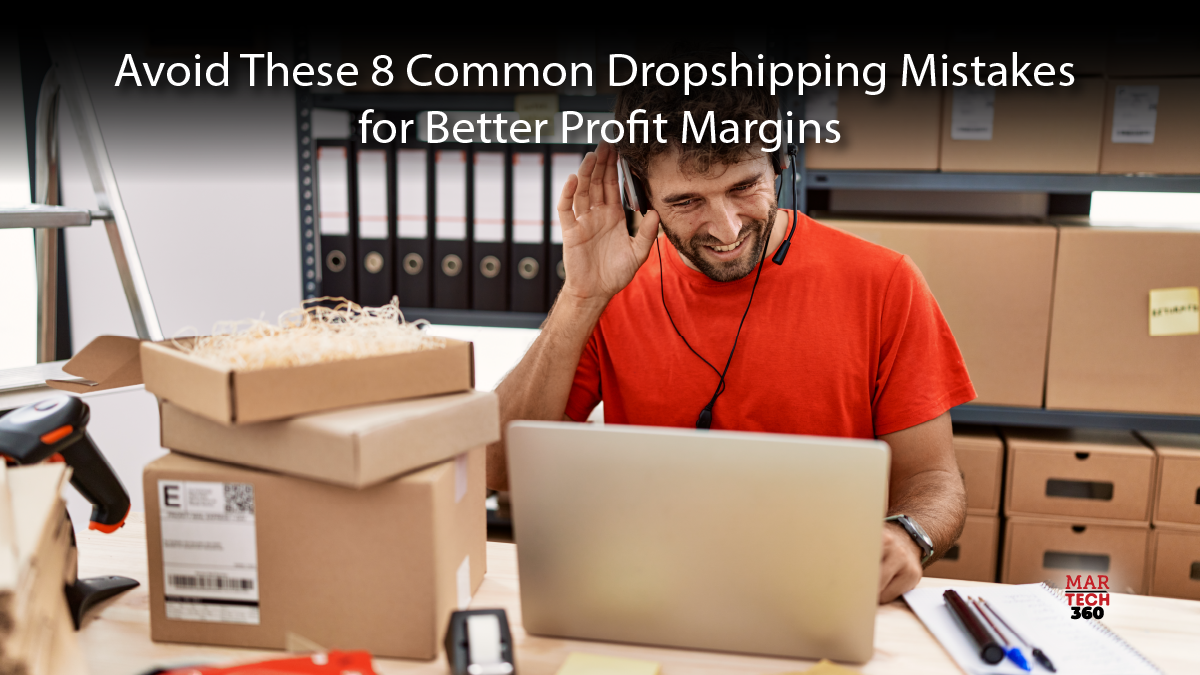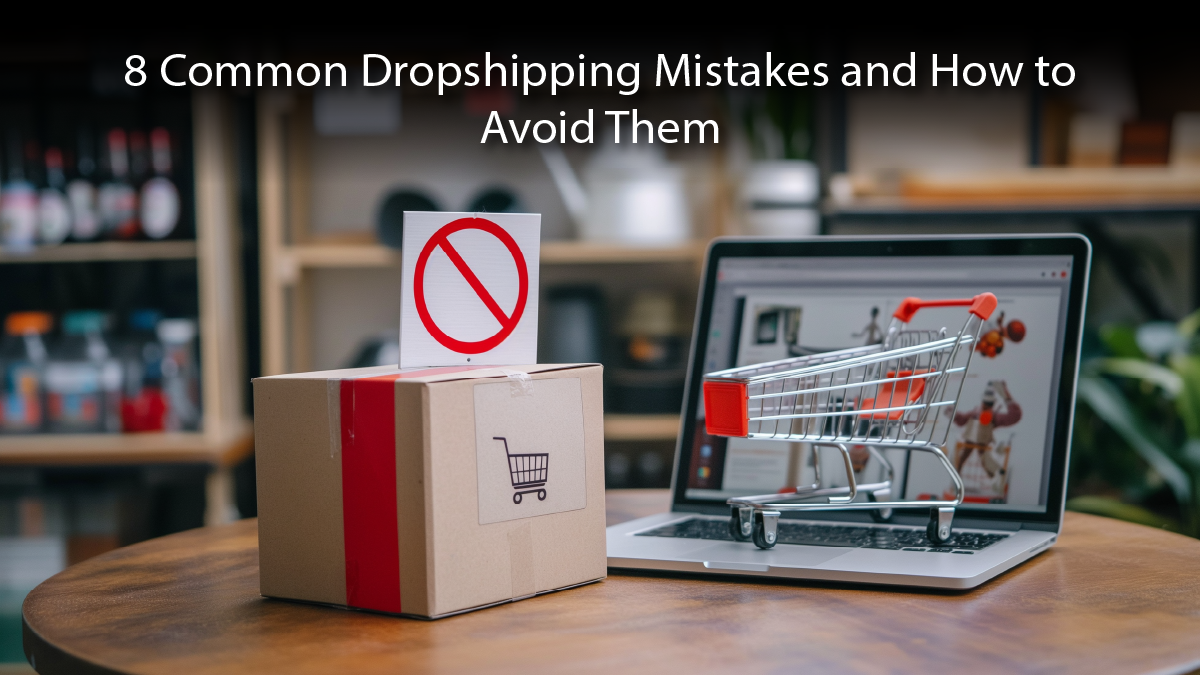Have you ever wondered why some dropshipping businesses thrive while others struggle to get off the ground? Many entrepreneurs jump into dropshipping with high hopes, only to find themselves facing unexpected challenges. The difference often comes down to avoiding common pitfalls. Let’s explore eight common dropshipping mistakes that can undermine your success and provide insights on how to steer clear of them.
What Exactly is Dropshipping?

Dropshipping is a fulfillment method where the seller doesn’t handle inventory. Instead, they connect with a supplier who ships products directly to customers. This model offers flexibility, reduces risks, and lowers initial costs, making it easier and faster to profit.
Although it might seem like a straightforward business model, there are numerous misconceptions about it. Common dropshipping mistakes and neglecting critical aspects of the operation can lead to significant consequences.
Also Read: A Comprehensive Guide on B2B eCommerce
8 Common Dropshipping Mistakes and How to Avoid Them
1. Missteps in Niche Selection
Choosing the right niche in dropshipping is crucial. It shapes your audience, marketing strategy, and product selection.
However, selecting the best niche before starting can be challenging. While picking popular trends might seem like a quick route to profit, it risks leaving your brand vulnerable to shifting consumer preferences. Choosing the wrong niche can result in wasted time and effort on marketing with little reward.
How to avoid:
Focus on selling in evergreen niches, which offer long-term stability rather than trending products that rise and fall. Shopify’s 2021 study highlights health and personal care, wardrobe, and home as popular niches. Avoid volatile products and use tools like Google Trends to gauge stability.
2. Lack of a Unified Marketing Plan
Customers don’t often stumble upon e-commerce brands by accident. For a dropshipping business to succeed, visibility is key. Without a clear and cohesive marketing strategy, your brand’s reach will be fragmented, causing you to miss out on potential customers genuinely interested in your products.
How to avoid:
Boost your SEO by using relevant keywords in headers, meta descriptions, and product details to improve rankings and authority. Engage your audience through email and social media to build trust and strengthen your brand voice.
3. Failing to Provide a Quality User Experience
Customer experience hinges on smooth buying journeys, easy-to-navigate pages, and excellent service. Avoiding these common dropshipping mistakes is crucial, as a poor user experience can swiftly drive customers away.
While setting up an online store is straightforward, rushing through it can backfire. In fact, 38% of consumers will disengage if a site’s layout and content aren’t appealing. Proper research and expertise are crucial to avoid disappointing your potential customers.
How to avoid:
Simplify your site. Too many pop-ups or clicks to reach products will drive customers away. Keep everything within three clicks from the homepage.
Optimize images. Slow-loading content causes users to leave, so compress images for faster loading while maintaining quality.
4. Delayed Shipping Times
Not having to manage fulfillment can reduce your workload, but it might also be stressful if you can’t guarantee fast delivery to your customers. While dropshipping fulfillment typically isn’t as fast as Amazon’s, you can still build a successful business with longer shipping times.
There’s no instant solution for slow shipping, but there are steps you can take to keep your customers satisfied.
How to avoid:
Consider using local suppliers to reduce shipping times. Research their average delivery times, including order processing and shipping. Build customer trust by being transparent about these times and communicating any delays upfront.
5. Avoiding New Product Experiments
Identifying the right products can be a process of trial and error, especially when it comes to avoiding common dropshipping mistakes. It’s uncommon for the first products you market to immediately resonate with your target audience. By experimenting with various dropshipping products, you can better understand your audience’s preferences and identify suppliers that might offer more advantages.
How to avoid:
Test the products yourself before selling them to understand what your customers will receive. Use audience research to guide your choices.
Gather customer feedback on the product and overall experience. This data will help you refine your offerings and find additional suppliers.
6. Ineffective Branding Abilities
Branding is the foundation of your e-commerce website. Without a strong, cohesive, and authentic brand, it’s hard to engage and retain customers. If your branding feels weak or inconsistent, customers will notice, which can deter them from making purchases or staying on your site long enough to learn about your business.
How to avoid:
A business has just 7 seconds to make a first impression online, so visuals and colors that reflect your brand are key. Start with market research to understand your audience and spot unmet needs. Strong branding helps your website stand out from competitors.
7. Adopting a Hands-Off Strategy
You’ve set up your shop, linked with a supplier, and posted some photos online—so it’s time to relax, right? Not quite! This approach can actually harm the business you’ve worked so hard to build.
How to avoid:
Invest time and effort into your dropshipping store—it’s your business! Stay on top of marketing, customer service, email, website optimization, and more. Instead of letting things run on autopilot, actively work to enhance your customers’ experiences. Remember, 80% of consumers prefer personalized brands, so your hard work will pay off in increased sales.
8. Lack of Strategy for Peak Season Management
Dropshipping, like any other business, can face challenges during peak season. Common dropshipping mistakes such as shipping delays, increased customer queries, and higher return rates can negatively impact your brand if you’re not fully prepared.
How to avoid:
Start preparing early by updating your website for an influx of potential customers and ensuring your customer experience team is ready to handle inquiries through various channels. Check in with suppliers about their processes and inventory to manage customer expectations effectively.
Establish a clear and accessible returns policy, as a complicated returns process can deter 52% of online shoppers. Offer self-service returns to simplify the process.
Although dropshipping requires less inventory management, success demands attention to branding, site optimization, product selection, and shipping. Avoid unrealistic expectations and focus on building proper resources and strategies before investing heavily in ads. This approach helps you benefit from dropshipping while avoiding logistical challenges.
Final Take on Common Dropshipping Mistakes
Avoiding these eight common dropshipping mistakes can make a significant difference in your business’s success. By addressing issues like poor supplier communication, inadequate market research, and ineffective marketing strategies, you can streamline your operations and enhance your profitability. Remember, the key to thriving in the competitive world of dropshipping is continuous learning and adaptation. Stay vigilant, keep refining your processes, and always prioritize delivering value to your customers. With these strategies in place, you’ll be well on your way to building a successful and sustainable dropshipping business.



Comments are closed.